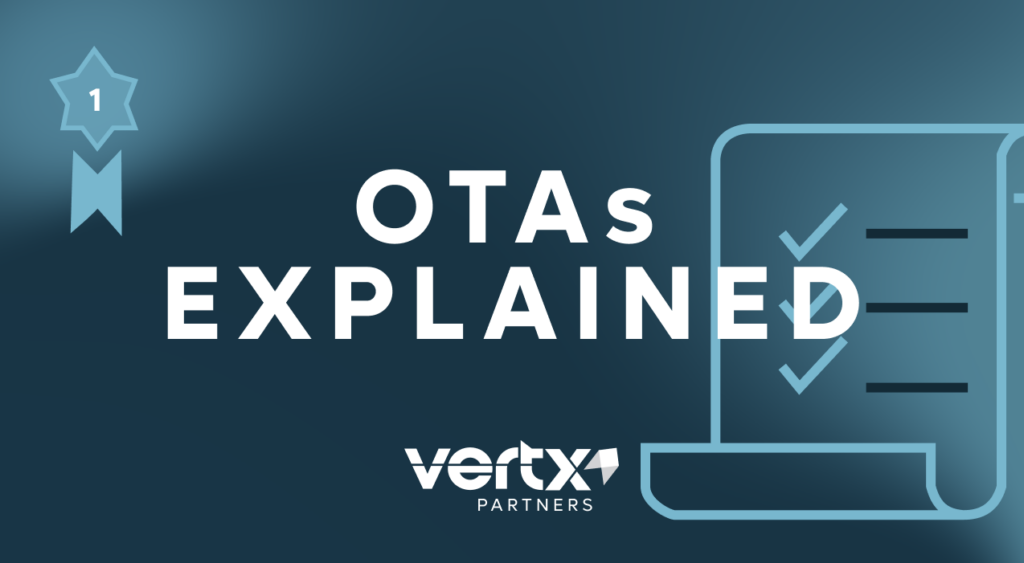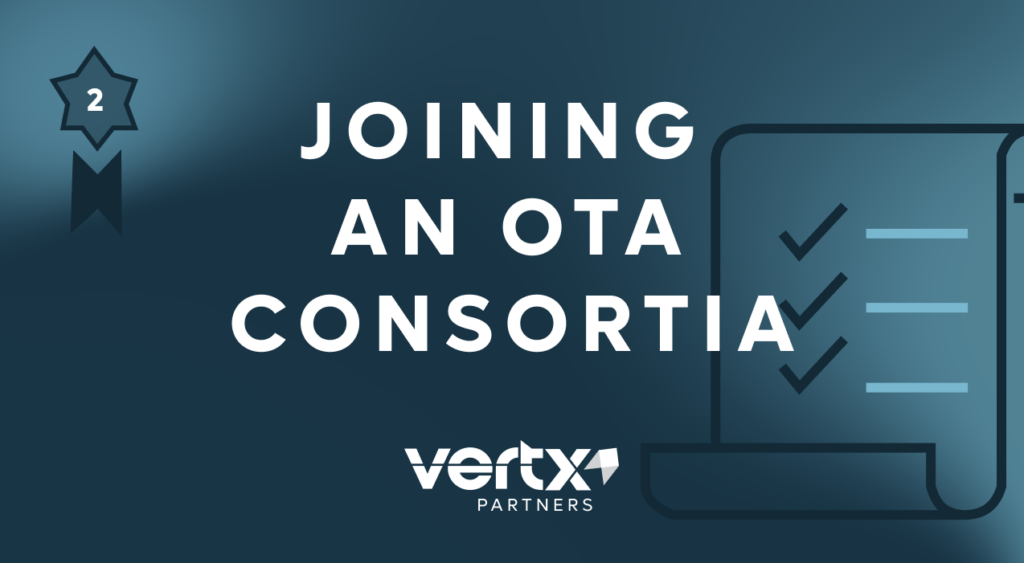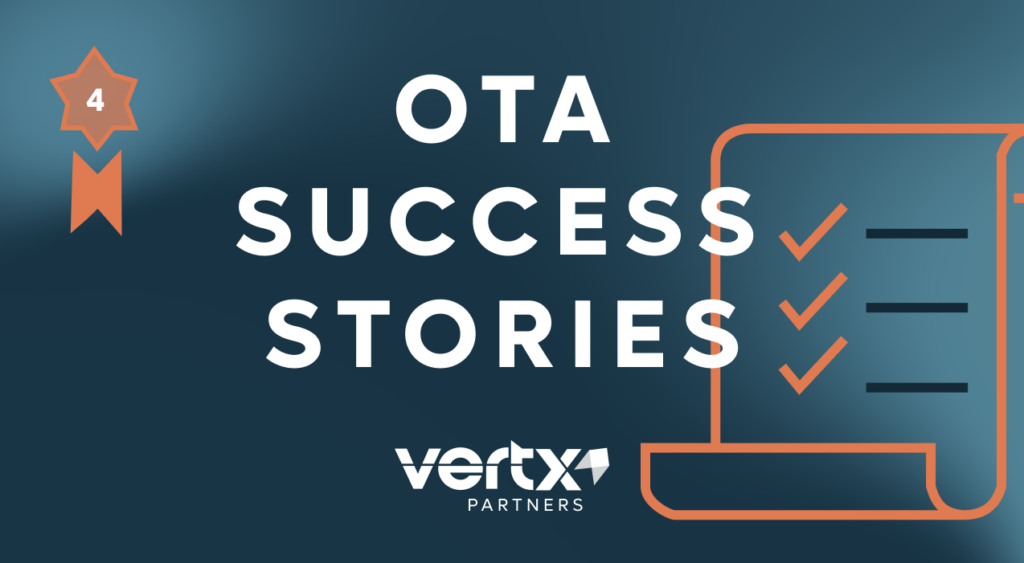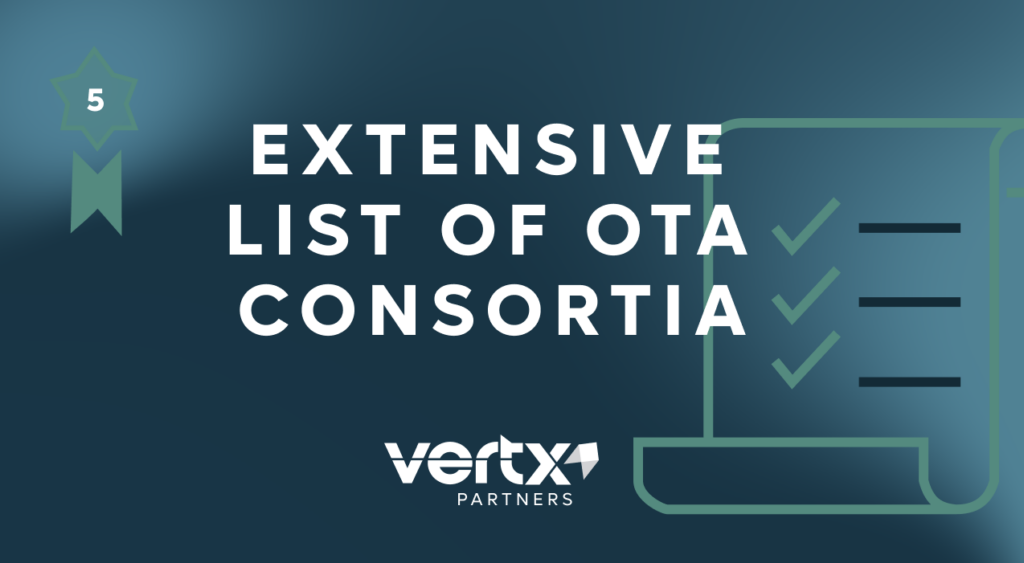This article explains the three levels of OTAs: Research, Prototype, and Production Purpose OTAs, and which agreement is best for your business.

Other Transaction Authority (OTA) Resources
This is resource three of five from Vertx Partners available about OTAs. You can find the other resources, including a comprehensive list of all OT Consortia, below.
If you’re new to the world of Other Transaction Agreements (OTAs), we suggest reading our “hub article” first, which serves as an introduction to OTAs. In it, we briefly covered the three types of OTAs: Research Purpose, Prototype Purpose, and Production Purpose.
Readers familiar with the Small Business Innovation Research (SBIR)/ Small Technology Transfer Research (STTR) process may see a parallel between that program’s three phases and the three levels of OTAs. Still, it’s important to remember that these stages do not necessarily progress linearly. Follow-on Production OTAs do often result from successful Prototype OTAs. That said, it is not necessary to begin with a Research OTA to progress to a Prototype agreement.
With that in mind, let’s examine the Research Purpose OTA:
Research Purpose OTA
These OTAs authorize the pursuit of dual-use technology through basic, applied, and advanced research projects. (We can understand dual-use technology to be a technology that has applications in both the commercial and defense industries.)
- Basic Research: Research with a focus on the advancement of knowledge in the theoretical or abstract realm.
- Applied Research: The implementation of principles discovered through basic research towards finding some solution to a problem.
- Advanced Research: R&D methods and activities combining elements of basic and applied research toward discovering and addressing a solution to a problem.
Unlike the other two agreements, Research Purpose OTAs include a cost-sharing provision. This provision is frequently a 50/50 split, though this ratio is flexible given resource availability, prior engagement, risk assessment, etc. Because OTAs utilize “economies of scale” – a proportionate saving in costs gained by an increased level of production – the feds encourage a degree of competition to align with best commercial practices. This is an advantage of eliminating government overreach in the OTA process.
Once the research is complete under an OTA, contractors may find that a test of their results is in order. This is where a Prototype Purpose OTA comes in:
Prototype Purpose OTA
The government issues Prototype Purpose OTAs to assess the viability and capabilities of a dual-use or defense-specific prototype. When issued by the U.S. Department of Defense, these OTAs typically prioritize the acquisition and/or development of weapon/weapon system-based projects.
Though the statute does not define ‘prototype,’ we typically define a prototype as “a physical or virtual model used to evaluate the technical or manufacturing feasibility or military utility of a particular technology or process, concept, end item, or system.”
The batch of prototypes produced is limited, but this OTA provides a provision forward for a follow-on Production Purpose OTA without needing to recompete the effort. This provision is a game-changer for businesses awarded the Prototype Purpose OTA, as the process is streamlined and more cost-effective.
Contractors must take stock of the fact that they will need to organize a plan of acquisition and follow-on activities in the event of moving forward with a successful prototype. However, for DoD-specific Production OTAs, the prototype must fulfill one of the following requirements to be statuary compliant and worthy of consideration:
- The prototype must enhance the mission effectiveness of military personnel;
- The prototype must enhance the platforms, systems, components, or materials that the DoD is subject to acquire or develop;
- Or the prototype must improve the armed forces’ platforms, systems, components, or materials.
If the business meets these statutes, the prototype is successful, and the contracting team has organized a plan of acquisition for the purposes of production, a follow-on Production OTA is the next step:
Production Purpose OTA
This is a non-competitive, follow-on agreement moving forward from the Prototype Purpose OTA. Given sufficiently advanced consideration towards follow-on activity in the prototype phase and a clause referencing such, this contract can be awarded.
There is no need to recompete at this phase of the agreement as the business in question has already demonstrated the prototype’s success. This is the ultimate culmination of a streamlined governmental process utilizing industry practices to remove roadblocks for small businesses and non-traditional defense contractors. This allows innovation at the rapid pace the commercial world demands.
Wrap-Up
Hopefully, going more in-depth about the differences between the three levels of OTAs has clarified many of the questions you may have had regarding this newer form of federal contract. Vertx Partners prioritizes the sort of streamlining of complex federal processes for non-traditional clients that the OTA exemplifies.
Vertx Partners has published a series of guides on OTAs, including the aforementioned hub article explaining the basics of OTAs, a guide detailing OT consortia, and an article compiling several OTA small business success stories to give you an idea of what these contracts are capable of.
Like what you’ve read here today? Interested in winning an OTA for your own company? Reach out to Vertx Partners on our contact page. By filling out our six-minute survey, you let us know about you and your business. Afterward, a knowledgeable Vertx representative will be in touch ASAP.
Become an Innovator With Us
Tell us about yourself, answer a few questions, and hit submit. It’s as easy as that to get started.




